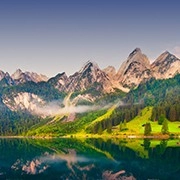Nature's Dance: Aurora

In the vast expanse of the night sky, a mesmerizing spectacle unfolds – a dazzling display of dancing lights that captivates the hearts and minds of those fortunate enough to witness it.
This ethereal phenomenon, known as the aurora, is a celestial dance that has inspired awe and wonder throughout human history, leaving an indelible mark on our collective consciousness.
What Is the Aurora?
The aurora, often referred to as the northern lights (aurora borealis) or southern lights (aurora australis), is a remarkable natural occurrence that takes place when charged particles from the sun interact with the Earth's magnetic field.

These particles, known as the solar wind, are funneled toward the polar regions, where they collide with atoms and molecules in the upper atmosphere, causing them to release photons in the form of brilliant, dancing lights.
Radio telescopes unveil cosmic mysteries, guiding humanity's quest for the unknown.
Secchi Disk transforms marine transparency research, unveiling ocean secrets.
Humans have discovered a self-cleaning mechanism for the Earth's atmosphere.
Unlocking the universe's hidden mysteries.
Why is there no life on the moon? Let’s unveil this fascinating mystery together!
Grassland mechanization enhances yield, and quality through advanced machinery and technical precision.
The Birth of Aurora
The creation of the aurora is a complex interplay between the sun's activity and the Earth's magnetic field. During periods of heightened solar activity, such as solar flares or coronal mass ejections, a greater number of charged particles are expelled from the sun's atmosphere, increasing the likelihood and intensity of auroral displays.
As these particles interact with the Earth's magnetic field lines, they are accelerated and funneled toward the polar regions, where they collide with the upper atmosphere's oxygen and nitrogen molecules. The specific colors of the aurora are determined by the types of atoms or molecules involved in the collisions and the altitude at which they occur.
The vibrant greens, the most common hue, are produced by the excitation of oxygen atoms at an altitude of approximately 60 to 150 miles (96 to 241 kilometers). The rarer yet equally breathtaking shades of pink and red are the result of collisions with oxygen molecules at higher altitudes, ranging from 150 to 600 miles (241 to 965 kilometers). Meanwhile, the brilliant blues and purples are attributed to the excitation of nitrogen molecules.

The Best Time to Witness Aurora
While the aurora can occur throughout the year, certain seasons offer better viewing opportunities than others. Generally, the aurora is most active and visible during the spring and autumn equinoxes, when the Earth's magnetic field is optimally aligned with the solar wind.
However, it's important to note that auroral activity is also dependent on the sun's 11-year cycle of solar activity, with more frequent and intense displays occurring during periods of heightened solar activity.
Top Destinations for Aurora Viewing
For those seeking to witness the breathtaking beauty of the aurora, several destinations around the world offer prime viewing opportunities. Here are three of the best spots to add to your bucket list:
1. Fairbanks, Alaska (United States): Located in the heart of the auroral oval, Fairbanks is renowned for its exceptional aurora viewing conditions, particularly during the winter months when the long nights provide ample opportunities to marvel at the celestial display.
2. Tromsø, Norway: Often referred to as the "Gateway to the Arctic", Tromsø offers stunning vantage points for witnessing the northern lights, with numerous organized tours and activities catering to aurora enthusiasts.

3. Yellowknife, Northwest Territories (Canada): Situated in the auroral oval and boasting a sub-arctic climate, Yellowknife provides a unique and picturesque backdrop for auroral displays, with opportunities to view the lights from cozy heated cabins or even while dog sledding.
Whether you're a seasoned aurora chaser or a newcomer to this celestial phenomenon, witnessing the aurora is an experience that will leave you in awe, humbled by the sheer beauty and power of nature's cosmic dance. So, plan your journey, bundle up, and prepare to be mesmerized by one of the most breathtaking spectacles the night sky has to offer.

 · Science Team
· Science Team